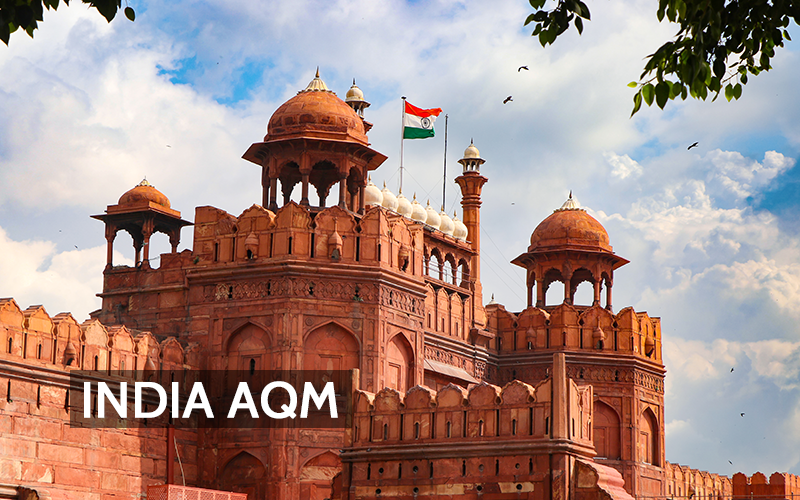Air pollution is a pressing public health and environmental issue in India, particularly in urban centers like New Delhi. Despite growing awareness, the country continues to grapple with the consequences of poor air quality, which include respiratory illnesses, reduced agricultural productivity, and economic losses. This article explores the regulatory framework governing air quality in India, its evolution, and the future trajectory of air quality management, while highlighting innovative private initiatives addressing the issue in New Delhi.
Government Regulations on Air Quality in India
India’s approach to air quality management has evolved significantly since the mid-20th century. The primary legislative framework governing air pollution is the Air (Prevention and Control of Pollution) Act, 1981. This law established the Central Pollution Control Board (CPCB) and State Pollution Control Boards (SPCBs) to monitor and regulate air quality.
The Environment Protection Act, 1986, enacted in the wake of the Bhopal Gas Tragedy, serves as an umbrella legislation for addressing various environmental issues, including air pollution. This act empowers the central government to set air quality standards and enforce penalties for non-compliance.
In 2009, the government introduced the National Ambient Air Quality Standards (NAAQS), defining permissible levels of key pollutants such as particulate matter (PM10 and PM2.5), nitrogen dioxide (NO2), and sulfur dioxide (SO2). These standards align with World Health Organization (WHO) guidelines, though India’s permissible limits are relatively lenient.
To streamline air quality monitoring, the National Air Quality Index (AQI) was launched in 2014. This real-time system categorizes air quality into six bands—from “Good” to “Severe”—to provide accessible data to the public. Additionally, the government implemented the Graded Response Action Plan (GRAP) in 2017 to address air pollution spikes in Delhi and the National Capital Region (NCR) during winter months.
Implementation and Challenges
While these regulations and initiatives represent progress, implementation remains a significant challenge. Weak enforcement mechanisms, inadequate funding for regulatory bodies, and limited public awareness hinder compliance. Furthermore, India’s rapid urbanization and reliance on coal-based energy exacerbate the issue. Seasonal factors such as agricultural stubble burning and festive fireworks also contribute to air quality deterioration, particularly in the north.
Future of Air Quality Regulation in India
The future of air quality regulation in India hinges on technological innovation, stricter enforcement, and collaborative efforts between stakeholders. The government has taken initial steps by introducing measures like the National Clean Air Programme (NCAP) in 2019. NCAP aims to reduce PM2.5 and PM10 levels by 20-30% by 2024 compared to 2017 levels, focusing on 132 non-attainment cities.
To achieve these goals, policymakers are exploring the expansion of renewable energy sources, electrification of public transportation, and enhanced waste management practices. The development of low-cost air pollution sensors and data analytics platforms also holds promise for more effective monitoring and intervention.
Private Initiatives Tackling Air Pollution in New Delhi
While governmental measures are critical, private initiatives have emerged as innovative solutions to Delhi’s air quality crisis. One such initiative is the BreatheEasy Labs program, which designs and installs indoor air purification systems. This initiative targets schools, offices, and homes, helping vulnerable populations mitigate exposure to toxic pollutants.
Ambee is a data-driven environmental intelligence company, which provides hyperlocal air quality monitoring using IoT-enabled sensors. Their services are increasingly utilized by businesses and policymakers for real-time data analysis.
Chakr Innovation is seeking to address vehicular emissions and has created a device that captures particulate matter from diesel generator exhausts and repurposes it into ink. This approach not only reduces air pollution but also promotes circular economy practices.
India’s journey toward improved air quality is marked by a combination of progress and persistent challenges. While the regulatory framework has laid a strong foundation, enforcement and public participation must improve to achieve meaningful outcomes. The future of air quality regulation will depend on a synergistic approach that leverages government policies, private innovation, and community engagement. As New Delhi and other urban centers grapple with air pollution, scalable solutions and sustained efforts will be critical to ensuring a healthier landscape for the country.
Related Article:
Air Quality Management in Thailand: Legislative Milestones and the Road Ahead
References:


